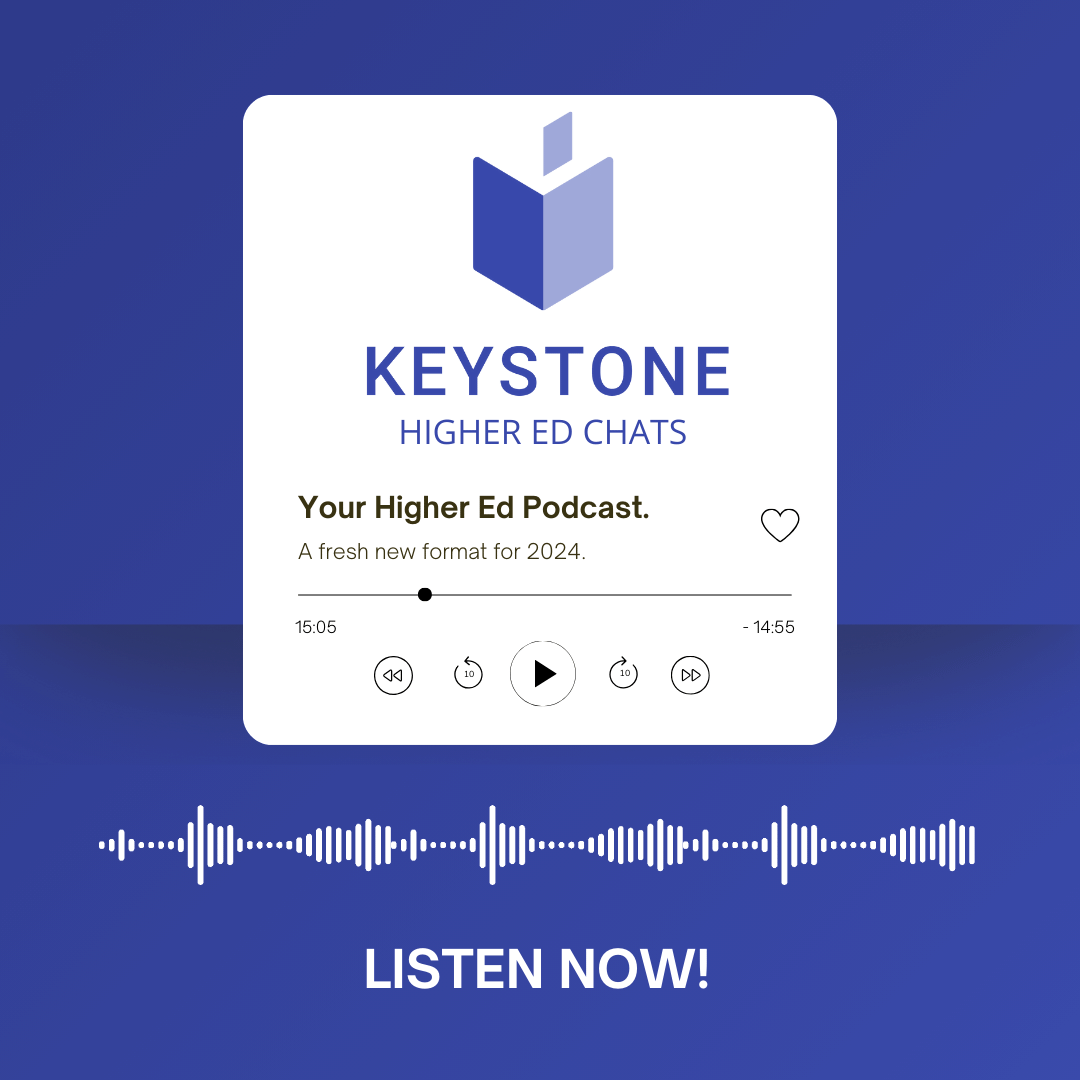- SERVICES
- HIGHER EDUCATION MARKETING
- ENGAGEMENT & ENROLLMENT MANAGEMENT
- STUDENT RECRUITMENT AGENCIES
- PROFESSIONAL EDUCATION & TRAINING
- WHO WE ARE
WHO WE ARE
Learn more about Keystone Education Group, including our leadership structure, why choose Keystone as your educational partner, and company press releases.
QUICK LINKS
- RESOURCES
RESOURCES
Find a range of helpful resources to help with your educational marketing. From on-demand webinars, reports & data, to customer testimonials and our downloadable media kit.
QUICK LINKS
- NEWS
- REQUEST A CALL

- Keystone Higher Education News
- How is Technology Changing International Recruitment?
Last month, higher education professionals from around the world met at the annual APAIE Conference and Exhibition in Singapore. The ‘gateway to Asia’ was an ideal destination for APAIE 2018’s guiding theme: ‘The Impact of the Fourth Industrial Revolution on Higher Education in the Asia Pacific.' Delegates were keen to learn how regional economic growth and a swelling middle class are making that gateway an interesting route for international student traffic heading into and out of Asia. Read on to find out how this dynamic region is shaping the future of international student recruitment and the international education sector in and outside the Asia Pacific.
Asia-Pacific as educational hub
As recently as 2015, outbound international recruits outnumbered inbounds by as many as 1.4 million students. Asian powers are looking to do something about that – and they will not have a better opportunity than the dawn of the fourth industrial revolution: governments are more anxious than ever not to witness further brain drain to Europe and the States, while foreign students and businesses are looking to Asia for cutting edge progress in disciplines such as robotics, virtual reality, and big data.
Indeed, China already saw a 10% year-on-year rise in inbound foreign Asian students in 2016. At the same time, Japan, Taiwan, South Korea, and Malaysia have stated targets for increased international student enrollment in the years up to 2025. These potential students are heading straight to the internet when researching, contacting, and enrolling in the schools that attract their attention.
And the smartest schools are leveraging that online data to connect students with courses, and overseas talent with potential employers. It’s easy to see why. The target audience of the recruitment is extremely technology savvy – Indonesia is even nicknamed the ‘social media capital of the world' – and those institutions that adapt to this trend will flourish.
Personalized education and recruitment
The technological advances of the third and fourth industrial revolutions will enable personalized learning to finally come of age in the Asia Pacific.
Sophisticated software, games, and virtual reality in education can engage students by making previously passive learning experiences active, and to visualize complex ideas. Communication technologies such as OneNote or Microsoft Teams facilitate group interaction within classrooms and between remote networks. And these developments will be backed up by online learning opportunities and learning management systems (LMS) such as LP+365, which hand control back to students who are lagging behind, racing ahead, or simply passionate about getting the most from their educational experience.
These advances also have great potential for institutions at the recruitment stage. A website should no longer be a passive information resource, but an experience that engages with and adapts to the visitor, making them more likely to return.
That means making student profiles real and identifiable; optimizing the college’s website to display relevant, personalized ‘dynamic content’ in response to real-time analytic data (such as ‘cookies'); and encouraging visitors to complete an appropriate conversion goal (such as requesting information or a campus visit, or starting the application process).
Personalization strategies like these increase the time a potential recruit spends on a website, and thus the likelihood of them applying.
The internet as a communication tool
The world wide web is a big old place, and a web presence is not enough by itself to guarantee the required number of potential students find and subsequently enroll in a given institution. In addition to building and optimizing that website, universities can capitalize on the use of external influencers to spread the word, lend a stamp of approval, and involve the institution in the web community.
Another key to communication: social media. Estimate that more than 3 billion people are active social media users. China is, by far, the biggest player in social media numbers. Last year, China accounted for nearly 600 million social network users and is expected to exceed 725 million by 2022. And while the US still comes in second for social media activity, India is expected to outstrip the US’s projected 220 million users by approximately 150 million in 2022. Social media is a must, but likewise is far more efficient when optimized.
“Social media should not be used as a form of advertising, but as a tool to engage,’ says Simon Pride, currently Director of Marketing and Communications at Harper Adams University. ‘You have to invest in the stories you place there.’ Rather than post ads, recruiters should be opening conversations.
Part of this more sensitive approach to social media is an awareness of variations in the culture and values of Southeast Asia. These nuances range from language and local dialect issues to social norms, and insights like the fact Facebook is far more popular in the region than elsewhere in the world – yet remains off-limits in China.
The ever more sophisticated nature of online marketing and recruitment makes it a fascinating area to learn and grow. Match these discoveries with a passion for connecting with young talent in Asia-Pacific, and the outlook is rosy for forward-looking universities.
More about:
Related Tags
Just For You
Top Picks
Higher Ed Chats Podcast
Listen to the latest episodes of our Higher Ed Chats Podcast - new format for 2024. Hear from Higher Ed thought-leaders from around the world!

Webinar: Dos & Don'ts of Higher Ed Social Media
.png?width=500&name=Social%20Media%20Webinar%20March%2024%20Banners%20(3).png)
Join our live webinar on 27th March to hear from a panel of Higher Ed Social Media experts.
Subscribe
to get the latest news and updates





